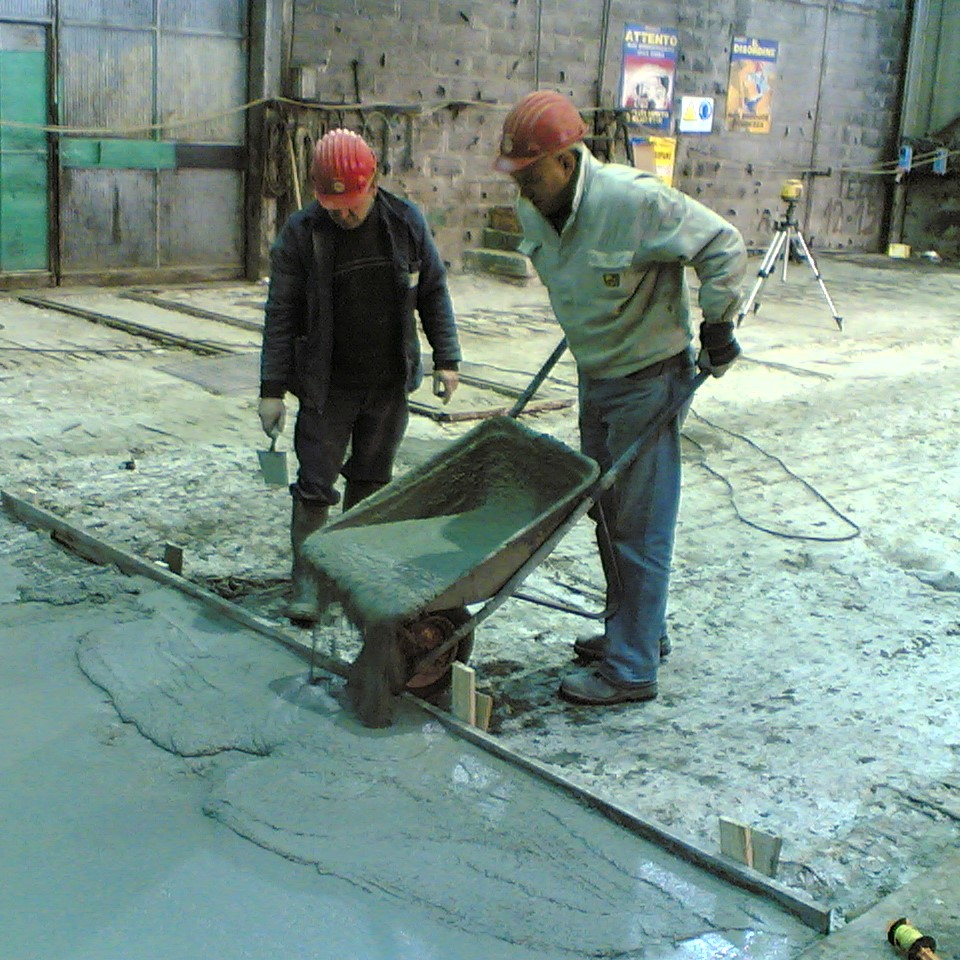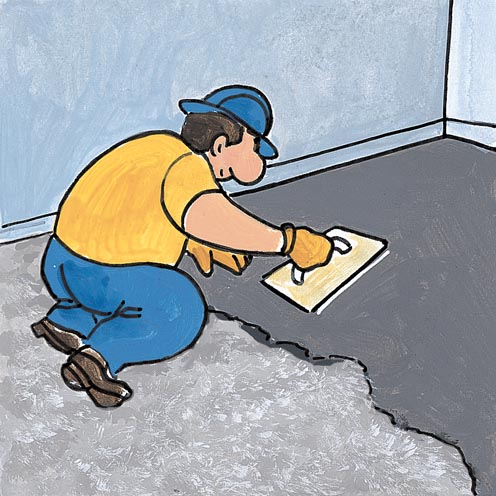



La formulation spéciale de Floor Q SFR permet une rhéologie plastique fluide sans ressuage ni ségrégation, conférant aux réparations effectuées : résistance mécanique, énergie de rupture, durabilité exceptionnelle et très haute résistance physico-chimique. Floor Q SFR a un temps d'ouvrabilité d'environ 120 minutes, après quoi le processus de prise est déclenché suivi d'un durcissement progressif. Le retrait hygrométrique est extrêmement limité, garantissant une stabilité volumétrique lors de la restauration. Les performances qui rendent Floor Q SFR unique sont :
Floor Q SFR est utilisé dans le renforcement structurel et dans la réparation de sols détériorés avec des revêtements caractérisés par de hautes performances en termes de capacité de déformation et de résistance anti-fissuration. Les principaux domaines d'application sont :
Le support doit être préparé par mécanique ou hydro-scarification sur une profondeur d'au moins 5 mm. La scarification du support est une opération absolument nécessaire pour assurer une bonne adhérence du revêtement appliqué. Dans le cas de supports pas suffisamment rugueux, insérer des connecteurs ou apprêter la surface avec des résines époxy pour joints de construction telles que Syntech RGS ou Syntech Pavisheer.
En cas de rapiéçage ou de réparations localisées, découper les contours à angle droit avec un tuyau.
Le support ne doit pas présenter de traces d'huiles, de graisses, de détergents, de revêtements protecteurs en général ou d'autres substances pouvant compromettre l'adhérence du coulis au support.
Le support doit être sain, propre, rugueux, sans parties friables ni poussières (aspiration en forte dépression avec équipement adéquat de toutes poussières et débris) avec une résistance à la traction > 1 N/mm2.
Laver la surface avec de l'eau sous pression et saturer le support avec de l'eau avant application, en éliminant tout excès d'eau sur la surface avant d'appliquer le coulis.
• Températures d'application : 5° ÷ 30° C.
• Il est fortement recommandé, tant pour un mélange efficace du renfort fibreux que pour une réalisation optimale des opérations de chantier, d'utiliser un malaxeur à axe vertical à mouvement planétaire. Faire attention, dans toutes les opérations de chantier, à la teneur en renfort en fibres métalliques abondamment présente dans le produit prémélangé, en portant des gants de protection individuelle appropriés.
• MÉLANGE : mélanger tout le contenu du sac avec de l'eau potable à raison de 11% - 12,5% par rapport au poids total du mortier (environ 2,75 - 3,13 litres par sac de 25 kg) jusqu'à l'obtention d'un mélange homogène. Temps de mélange : environ 4 minutes avec un mélangeur à haut rendement. • Dans le cas de fortes épaisseurs, faciliter le mouvement et le compactage du coulis avec une aiguille vibrante sans dépasser le temps de vibration (quelques secondes)
Dans les applications sur sols et dalles industriels, niveler la surface avec une règle vibrante sur des gabarits préparés. Dans le cas d'épaisseurs supérieures à 50 mm, prévoir l'insertion de treillis électrosoudés ancrés au support avec des connecteurs métalliques en forme de "L" fixés dans des trous spéciaux résinés avec Syntech Profix. Sur les dalles avec poutres, prévoir le positionnement de connecteurs métalliques sur les poutres pour la collaboration structurelle nécessaire
Les surfaces exposées aux agents atmosphériques doivent être protégées, après application, par des feuilles de polyéthylène ou des traitements anti-évaporation. Ce dernier doit être pulvérisé sur la surface restaurée dès le début de la phase de durcissement (lors de la restauration des sols, prévoir des traitements anti-évaporation uniquement si aucune autre application protectrice ou esthétique-protectrice n'est prévue ci-dessus : contacter notre service technique pour obtenir des conseils sur la méthode de protection. des surfaces les plus adaptées et sur le type de produit pouvant être utilisé comme agent de cure).
Couvrir de TNT humide et d'une feuille imperméable dès que les surfaces sont praticables et garder les surfaces couvertes pendant au moins 24 heures.









Résistance à compression à 1 jour
EN 12190
Résistance à compression à 7 jours
EN 12190
Résistance à compression à 28 jours
EN 12190
Résistance à la flexion à 1 jour
EN 196-1
Résistance à la flexion à 7 jours
EN 196-1
Résistance à la flexion à 28 jours
EN 196-1
Absorption capillaire
UNI EN 13057
Lien d'adhérence
UNI EN 1542
Module élastique statique
EN 13412
Résistance à l'usure
UNI EN 13892-3
Résistance à la traction longitudinale
Mesure de la résistance à la traction en flexion (limite de proportionnalité, résiduelle) fr 3 (ouverture 2.5 mm)
EN 14651
Masse volumique
UNI EN 1015-6
Environ 21 kg/m² de Floor Q SFR pour chaque centimètre d'épaisseur à créer (environ 2100 kg pour chaque mètre cube).